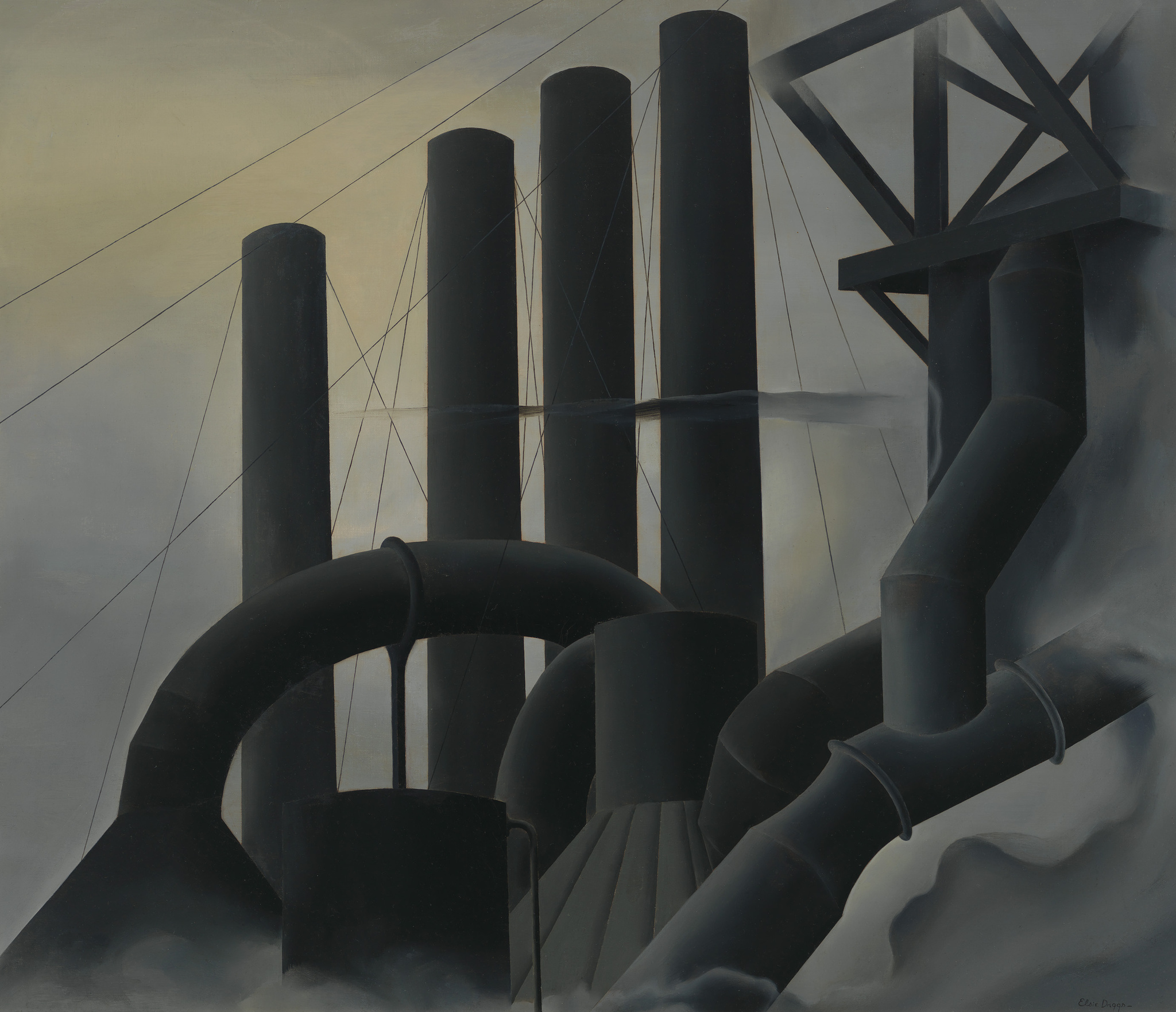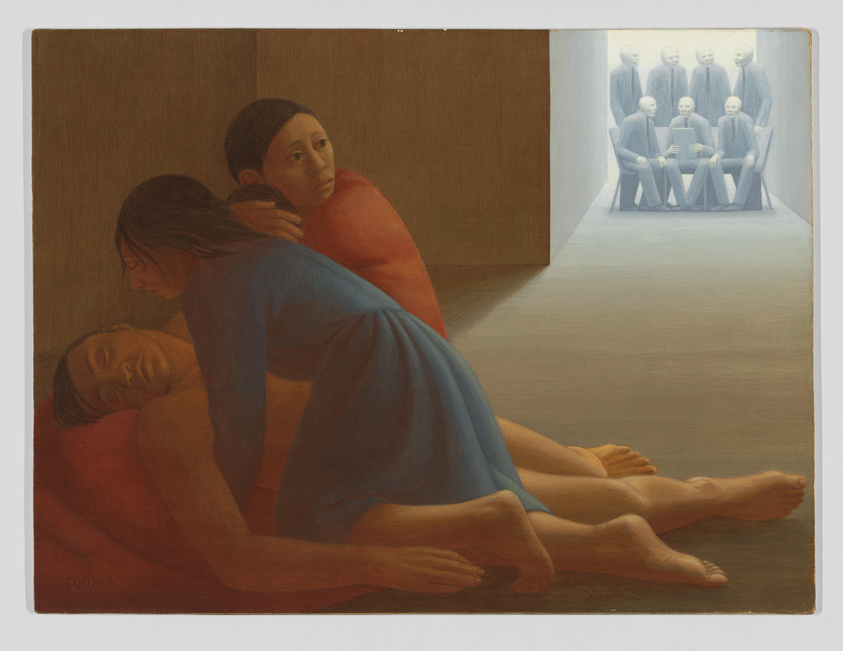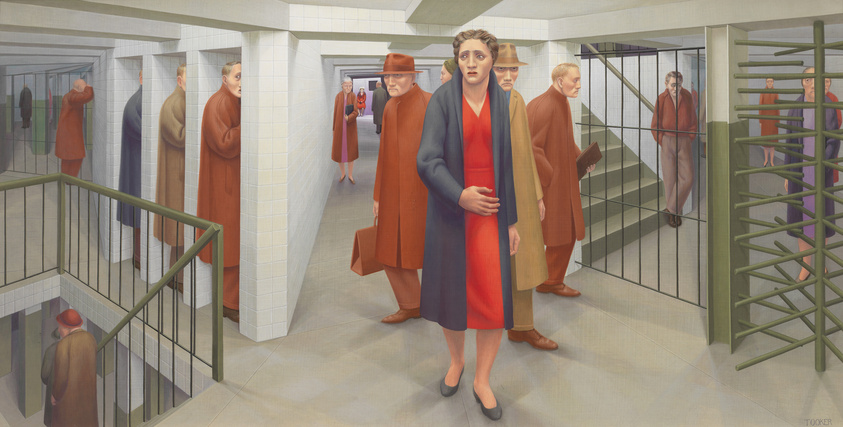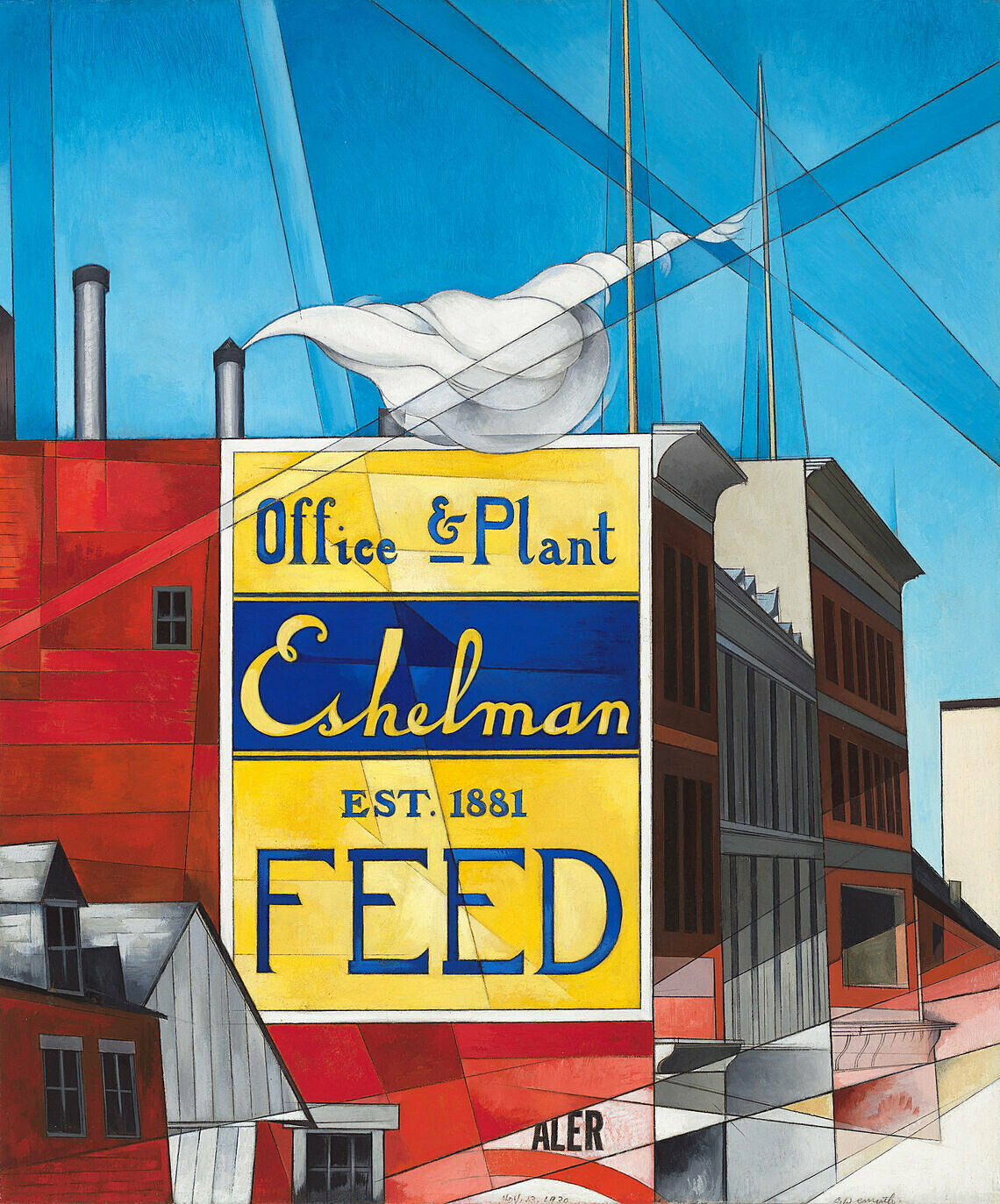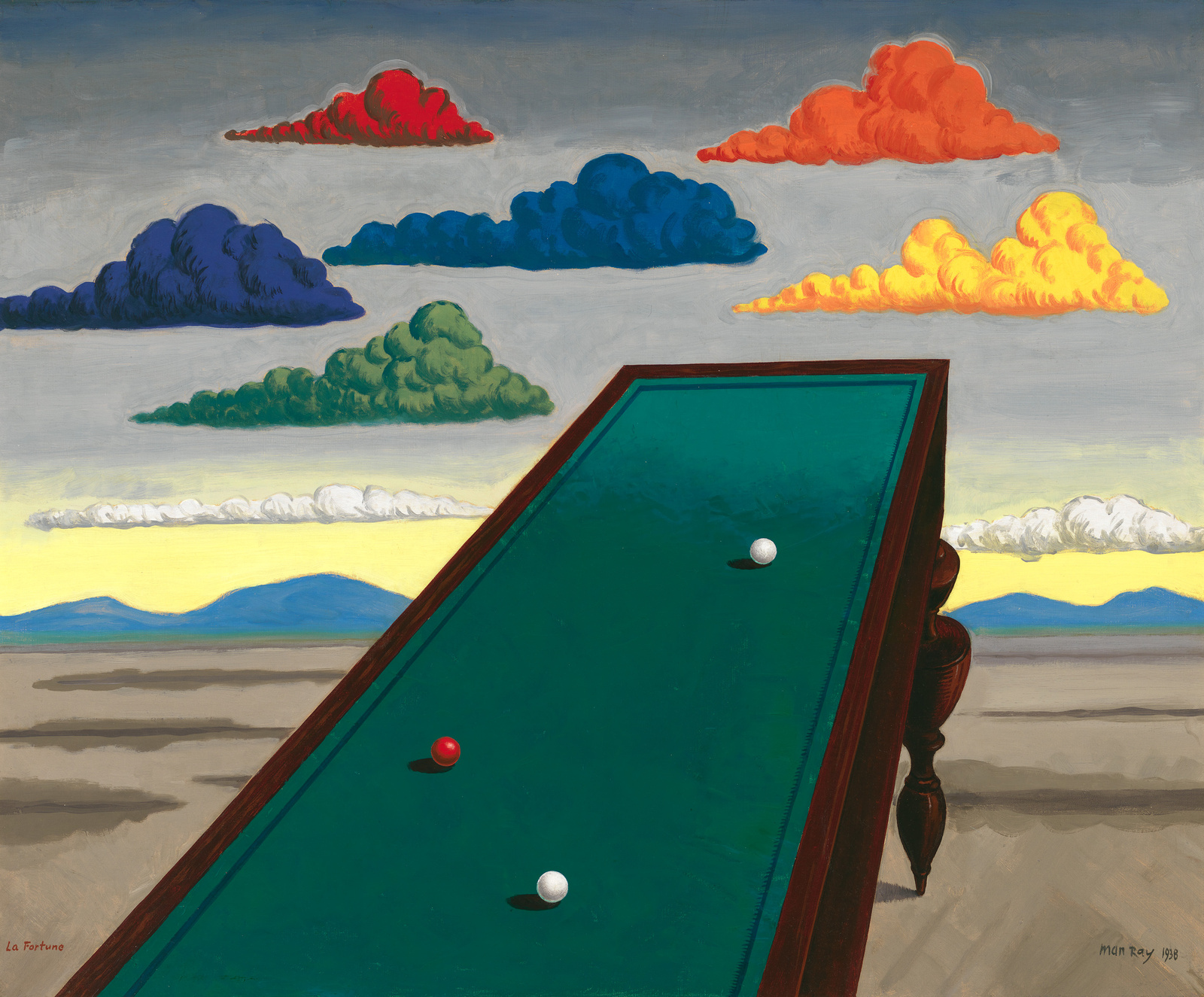Elsie Driggs, Pittsburgh | Video in American Sign Language
Feb 21, 2018
In The Whitney's Collection: Selections from 1900 to 1965 and Where We Are.
Educator Lauren Ridloff discusses a work by Elsie Driggs in the exhibition Where We Are: Selections from the Whitney’s Collection, 1900–1960.
The factory we see here seems dark, ominous, and threatening. We see toxic fumes coming up the side. We also see four smoke stacks and thin lines. These are the support cables, holding up the stacks. If we focus on the geometric shapes and forms here they might be beautiful. This is one of Driggs’s most famous paintings. Her work focuses on the urban and industrial landscapes of America in the 1920s and 1930s. This scene comes from a powerful memory that Driggs had from childhood. She remembers one night while riding the train she passed this factory with its billowing smoke stacks. She couldn’t forget the image. Later, when she was an adult, she went back to Pittsburgh. She found this exact factory. She met with one of the owners and wanted to go inside and look around. The owner wouldn’t let her in, saying it was no place for a woman. But that didn’t matter to Driggs. She had already found her view. A perspective from a nearby hill. She started the project with pencil studies. She was fascinated with how the steel mill changed. How the smokestacks were covered in soot. She said they were “great velvet forms.” Driggs said: “This shouldn’t be beautiful. But it is.”

